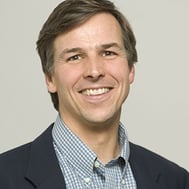
Career development isn’t handed to you. It’s something you take charge of. But what does it really mean to “own” your career? And how does leadership, both from the individual and the managerial side, help make that possible?
In this post, Insight Experience co-founder Nick Noyes, reflecting on a team conversation, shares his view on career ownership and why the most meaningful growth often comes from a shift in mindset. His perspective is grounded in experience, has been shaped by decades of leadership development work, and offers a compelling lens on how taking initiative can reshape both careers and organizational culture.
These ideas also reflect the kinds of behaviors we aim to build through leadership development: strategic thinking, communication, and personal ownership.
What follows is Nick’s perspective in his own words.
Owning Your Career Starts with a Shift in Mindset
Owning your career starts with a mental shift, a reframing of the nexus of control. Rather than assuming a passive role, which inherently assumes that “management” is responsible for promotions, rewards, feedback, performance assessment, compensation decisions, promotions, title changes, role changes, etc., employees can choose to reframe that power into their own hands.
I think millennials do this more naturally than boomers, but this is also personality-driven. That said, this mindset isn’t about ignoring organizational influence. This doesn’t assume that the boss or organization doesn’t also have power over your career, especially in today’s environment.
Still, when an employee actively takes control of their path, something shifts. If an employee chooses to take control of their career, the conversation—and relationship—changes. It becomes less inherently hierarchical and becomes more of a dialogue—ideally, a collaborative one.
Leadership and the Venn Diagram of Career Purpose
So, what does this have to do with leadership? There are two perspectives: the employee and the manager.
From the employee side, taking ownership of your career is inherently a leadership activity. It calls for reflection, vision, and decision-making. It requires many leadership skills, beginning with stepping back (think of it as zooming out) to gain perspective on your career and where you want to go—and then plan how to get there.

One useful image here is a Venn diagram, a simple, strategic framework that helps visualize the intersection between personal ambition, individual strengths, and organizational needs. This version echoes elements of a broader concept attributed to Spanish author Andrés Zuzunaga, which explores the alignment of passion, talent, societal contribution, and economic value. In this version, one circle represents what you want to do—or be. The second highlights what you are good at, your skills of value to the organization. The third shows what the organization needs. The overlap of the three circles reveals the sweet spot.
Managers can, and should, use the same lens. A key role of leaders is developing talent and managing it to maximize the organization’s capability. That, too, involves the Venn diagram, strategically mapping the needs of the business to the talent needed to get you there and then applying the strategic, operational, and interpersonal skills to make it all happen.
Although this offers a powerful lens for individual and team alignment, it’s just one part of a larger leadership rhythm we think about often.
The Business Cycle of Leadership™: A Shared Responsibility
Beyond the Venn diagram of skills, passion, and organizational need lies a broader leadership rhythm, what we at Insight Experience call the Business Cycle of Leadership™. This framework underscores the universal leadership responsibilities that span roles and levels.

You can explore the model in more detail at this page of our Video Gallery, which includes a video explanation along with a written transcript.
For both the employee and the manager, the three leadership activities apply. Both stakeholders need to set direction for themselves, their work, and their part of the organization. Both need to use their time mindfully and strategically to serve themselves and the needs of the business. Both need to communicate effectively, paying attention to both what they say and how they say it, if they want to maximize their impact in the organization.
Career ownership is both a mindset and a practice. It’s about seeing yourself as an active player in your own development and recognizing that leadership isn't confined to a role or a title. Whether you’re managing a team or mapping your next steps, the levers are the same. Step back, think strategically, use your time with intention, and communicate clearly. That’s where growth happens—for individuals and for organizations.

Nick Noyes
Nick Noyes is a co-founder and partner of Insight Experience. He has more than 20 years of experience working with clients on education and strategic change initiatives. His work spans many activities, including the design of simulation-based educational programs, executive facilitation, coaching, and action learning initiatives. In addition to the leadership he provides for Insight Experience and its clients, Nick is responsible for the company’s strategy, business development, and marketing efforts.









